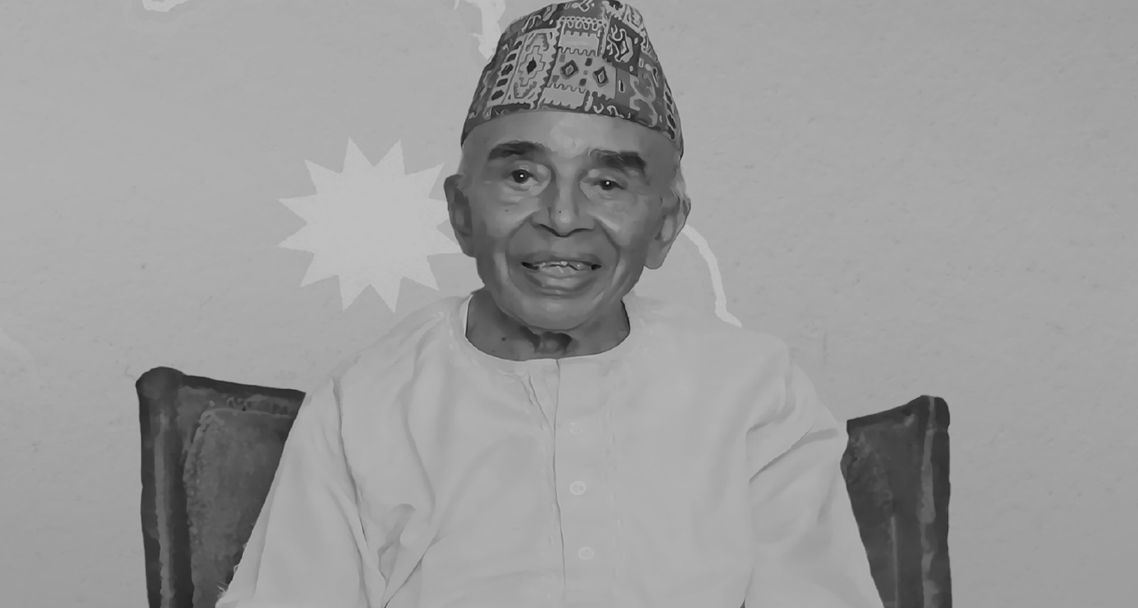

KATHMANDU: Nepal has lost one of its most steadfast chroniclers of truth. Bhairab Risal, the indomitable voice of conscience in Nepali journalism, passed away Sunday night at the age of 97. A pioneering figure who shaped generations of reporters and public discourse alike, Risal died at a hospital in Baneshwor, Kathmandu, where he had been receiving treatment for heart and lung-related complications.
Born on August 12, 1928, in Bhaktapur, Risal’s journey was anything but ordinary. He was a priest’s son sent to a Sanskrit school under the Rana regime, a period he remembered as being marked by cruelty and repression. “My father wanted me to follow in his footsteps,” he once said, reflecting on his early days at Ranipokhari Sanskrit Pathshala. “I used to be a part-time priest, performing rituals—even while attending school.”
The irony of his priestly beginnings and eventual transformation into a voice for the voiceless was not lost on him. The Ranas, he noted, sent Brahmin boys like him to school to “wash away their sins.” Education was free, but the ideals he developed were priceless—and rebellious.
Graduating in 1955, Risal found doors closed to him because of his known involvement with the communist movement. Driven by necessity rather than passion, he took a job as a reporter at Halkhabar in 1956, cycling around the Kathmandu Valley with a monthly salary of just Rs 100. It was the beginning of a lifelong commitment to telling untold stories.
A chronicler of change
Risal did not report news; he chased it, nurtured it, and elevated it. From the streets of Kathmandu to the remotest corners of Nepal, his was a journalism rooted in observation, curiosity, and fierce independence. He developed close working relationships with political luminaries like BP Koirala, Bedananda Jha, and Dilli Raman Regmi, yet never traded integrity for access.

In the late 1950s, he covered stories the government didn’t want told—like the existence of the death penalty, which he discovered was hidden from both the public and the international community. “My method of journalism, if you can call it that,” he once mused, “was to roam around and meet people to find out if there were worthy news stories.”
After Halkhabar shut down in 1959, Risal joined the national census team—an experience that introduced him to Nepal’s vast cultural landscape. He led a team to Kalapani, Lipulekh, and Limpiyadhura—territories now at the center of a border dispute with India—and helped record data from these regions long before they became politically contentious.
State pressure and the will to speak
In 1963, Risal joined the Rastriya Samachar Samiti (RSS), Nepal’s official news agency. Though he worked there for over two decades, his time at RSS was marked by frustration. Under tight government control, journalists were discouraged from reporting shortages, dissent, or crisis. “We had to write that everything was fine, even when there was no salt or sugar in the markets,” he recalled.
His eventual resignation from RSS was an act of quiet rebellion. He turned to freelance journalism, refusing to be a mouthpiece for power. And it was during this time that he found a new calling—the environment.
The father of environmental journalism
The Kathmandu he loved was changing—growing noisier, dirtier, and more indifferent. In 1986, he helped found the Nepal Forum of Environmental Journalists (NEFEJ), an institution that sparked a national consciousness about the deteriorating ecological state. A decade later, NEFEJ would birth Radio Sagarmatha, South Asia’s first independent community radio station. There, Risal hosted the beloved program “Uhile Bajeka Palama”, a nostalgic yet probing look at Nepal’s past. Even in his 90s, when his health wavered, he remained active. Too frail to visit the studio, he hosted his program by telephone. He still wrote. He still questioned.
A life of conviction
In 1991 (2048 BS), Risal contested the general election from Bhaktapur, representing the Nepal Workers and Peasants Party. He didn’t win—but it wasn’t about power. It was about principle.
He was also a prolific author. His works include Sadhulai Suli (a jail diary), Logneswasni, Kehi Mitraka Chithi, and Bhairav Dai. Each of them is a testament to his sharp intellect, unwavering empathy, and journalistic soul.
Bhairab Risal’s honors are too many to list. He received the Jagadamba Shree, among the most prestigious literary awards in Nepal, and numerous accolades for his work in human rights and environmental advocacy. But perhaps the most telling tribute came from his friend and fellow journalist Tejeshwar Babu Gongah, who said:
“Despite his age, I still consider him a youth. He is more dedicated to journalism than many of the young journalists I know.”
Another friend noted, “In Nepali, Bhairab means sky. And our Bhairab Risal is like the sky—vast, generous, ever present.”

Legacy etched in ink and air
At his own request, Risal’s body will be donated to Patan Hospital for medical research. In death, as in life, he remains committed to the public good.
He is survived by his wife, two sons, and two daughters. But in truth, all of Nepali journalism is his child—shaped by his pen, his voice, his questions.
Bhairab Risal did not merely report history. He lived it, documented it, and sometimes defied it. He was a priest who became a dissident, a bureaucrat who became a rebel, and a government journalist who found his freedom in exile. He left behind no illusion of neutrality—but a legacy of unapologetic truth-telling. In this age of speed and sensationalism, Risal’s life is a reminder that journalism is not just a profession—it’s a public service. And for nearly a century, Bhairab Risal served.